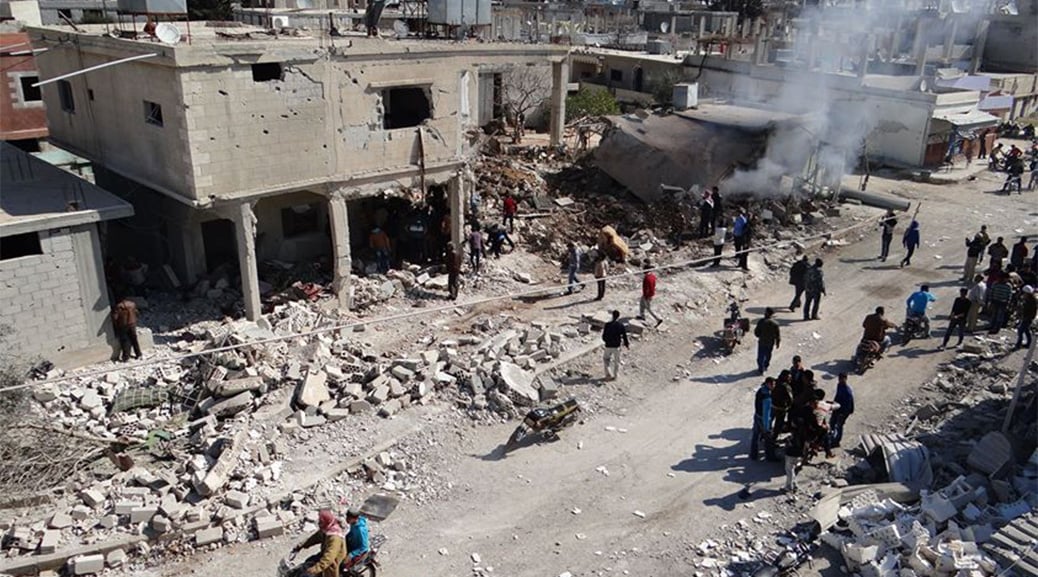
Introduction
Tafas city is located in southern Daraa governorate. The city administratively follows al Mzayreeb county, and has a strategically important location.
A URL showing the city location
This report draws upon the investigations conducted by SNHR team with activists and eyewitnesses from Daraa governorate. The report contains two accounts that have been documented and included in the report, in addition to the news, pictures, and videos that we received from cooperating activists. All activists’ and eyewitnesses’ names were changed as per their request.
For more information on SNHR methodology in documenting victims, please see the following URL
Details
Syrian government helicopters targeted Tafas city on February 12, 2014, with a barrel bombs, killing 13 individuals, including eight individuals from the same family.
Fadel Abdul Ghany, chairman of SNHR, says: “We found out, in the course of preparing researches and reports on use of barrel bombs by government forces, that they don’t serve any particular military purpose, and, rather, are only used to deliberately punish civilians, as they have also widely damaged buildings and the infrastructure as well.”
SNHR spoke to Mr. Abu Asim, an activist from Tafas city, who told SNHR:
“Around 9:10 AM, helicopters starting flying in the city sky before dropping a barrel bomb in the middle of the heavily-populated residential neighborhoods which house a large number of IDPs.”
“The martyrs were mostly children and women, and eight of them were from the same family. There weren’t many wounded, as most of them died because of the shrapnel these barrel bombs contain. Most of the remaining wounded had their limbs amputated.”
Abu Hamza, an activist from Tafas city who was contacted by SNHR, told SNHR about the bombing:
“Before the bombing, helicopters were soaring above the city. About 9:00, we heard a huge explosion. I went up to the roof to locate the explosion location. It was a barrel bomb dropped by the helicopter that targeted a residential neighborhood in the middle of the city. This is a heavily populated neighborhood, especially with residents from Ataman and Nawa displacing here after those two cities were liberated.”
“I headed for the site to take pictures. Blood was covering a residential building, and dead bodies were buried under rubbles. People started to pull out the dead bodies. Most of them were children, and two of them were headless. ”
“Most of the martyrs were from one family, al Zou’bi family. We could only find the head skin, which was covered in white hair, of one of the victims, who was a member of the family.”


